SDR vs BDR Explained: What You Need to Know in 2025


The Two Roles That Can Make or Break Your Sales Pipeline
Your sales team burns through leads, but deals aren't closing fast enough. Marketing generates interest, but qualified opportunities vanish in the handoff. Sound familiar?
The problem isn't your product. The problem is role clarity.
In 2025, B2B sales teams can't afford to blur the lines between Sales Development Representatives (SDRs) and Business Development Representatives (BDRs). These roles aren't interchangeable - they're specialized weapons for different pipeline stages.
This guide explains the SDR BDR difference, when to hire each role, what tools power their success, and how top sales teams structure these positions for maximum pipeline velocity.
What Is an SDR (Sales Development Representative)?
A Sales Development Representative (SDR) qualifies inbound leads that marketing has warmed up. SDRs bridge marketing and closing sales reps.
Core SDR Responsibilities:
Lead Qualification: SDRs receive Marketing Qualified Leads (MQLs) and convert them into Sales Qualified Leads (SQLs).
Inbound Follow-Up: When prospects download content, request demos, or engage with your website, SDRs reach out immediately.
Discovery Conversations: SDRs run qualification calls assessing fit, budget, authority, need, and timing (BANT framework).
Meeting Booking: Once qualified, SDRs schedule appointments for Account Executives (AEs) to close deals.
When SDRs Add the Most Value:
SDRs excel when you have strong inbound marketing. If your company generates consistent website traffic, content downloads, or demo requests, SDRs ensure leads don't fall through cracks.
Best-fit scenarios for SDRs:
- SaaS companies with product-led growth
- Organizations with active content marketing
- Companies running paid ads generating form fills
- Businesses with high website visitor conversion rates
What Is a BDR (Business Development Representative)?
A Business Development Representative (BDR) hunts for new opportunities through outbound prospecting. BDRs don't wait for leads - they identify ideal prospects and initiate cold outreach.
Core BDR Responsibilities:
Prospect Research: BDRs build target lists using Sales Navigator, Apollo, and Tamtam to find decision-makers matching your ideal customer profile.
Cold Outreach: BDRs launch multi-channel campaigns via cold email, LinkedIn, and phone to start conversations with prospects unfamiliar with your brand.
Account-Based Marketing: BDRs work with marketing on targeted campaigns for high-value enterprise accounts.
Pipeline Generation: BDRs create new opportunities from scratch, filling pipeline with prospects outside existing marketing reach.
When BDRs Add the Most Value:
BDRs thrive when selling to specific, well-defined accounts where inbound volume is low or when penetrating new markets.
Best-fit scenarios for BDRs:
- Enterprise sales with long cycles
- Niche B2B markets with limited inbound
- New market expansion initiatives
- High ACV products where targeted outreach justifies effort
SDR vs BDR: The 5 Critical Differences
1. Lead Source: Inbound vs Outbound
SDRs work with inbound leads. These prospects showed interest by visiting your website, downloading content, or requesting information. SDRs nurture existing interest into qualified opportunities.
BDRs work with outbound leads. These are cold prospects who fit your ICP but haven't engaged with your brand. BDRs create interest from zero through targeted cold outreach.
2. Lead Volume vs Lead Quality
SDRs handle higher volume, lower intent. Marketing generates hundreds or thousands of leads monthly, but only a fraction are ready to buy. SDRs qualify quickly.
BDRs work fewer leads with higher intent. BDRs carefully research specific accounts, resulting in lower volume but higher conversion rates once conversations start.
3. Sales Cycle Stage
SDRs operate early-to-mid funnel. They receive leads with some awareness and move them toward sales readiness.
BDRs operate top of funnel. They create awareness and interest where none existed, often requiring more touches before generating qualified meetings.
4. Skill Sets Required
SDRs need strong qualification skills. They must quickly assess fit, ask smart discovery questions, handle objections, and know when to push for meetings versus nurture over time.
BDRs need creativity and persistence. They must craft compelling cold outreach, handle rejection gracefully, research accounts thoroughly, and think strategically about account penetration.
5. Technology Stack
Both roles rely heavily on sales technology, but tool requirements differ:
SDR Tech Stack:
- CRM for lead management (HubSpot, Salesforce, Attio)
- Email automation for follow-up (Instantly, Smartlead)
- Calling tools for qualification
- Lead routing and distribution tools
BDR Tech Stack:
- Prospecting databases (Apollo, ZoomInfo, Ocean.io)
- Email enrichment (FullEnrich, Prospeo, Enrow)
- Cold email platforms (Instantly, Smartlead, Saleshandy)
- LinkedIn automation (HeyReach, Lemlist)
- Intent data platforms (Pronto, Common Room, Unify)
How Top Sales Teams Structure SDRs and BDRs
Reporting Structure
According to The Bridge Group's 2022 Sales Development Metrics Study, 68% of SDR teams report to the head of sales rather than marketing. However, inbound-focused SDR teams are 2.1 times more likely to report to marketing.
Best practices:
- Pure Inbound SDRs: Can report to marketing or sales
- Outbound BDRs: Should report to sales leadership
- Hybrid Roles: Report to sales with dotted line to marketing
Team Ratios
BDR-to-SDR Ratio: Companies deploy approximately 2.3 BDRs for every 1 SDR, reflecting higher difficulty of outbound prospecting.
SDR/BDR-to-AE Ratio: Median ratio is 1 sales development rep to 2.6 Account Executives.
Compensation Benchmarks (2025)
Based on industry data:
Median SDR BDR Compensation:
- On-Target Earnings: $80,000
- Base:Variable Split: 68:32 ($54,400 base + $25,600 variable)
- Experience at Hire: 1 year (down from 2.5 years in 2010)
Variables Affecting Compensation:
- Geographic location (remote vs in-office)
- Company size and growth stage
- Average Contract Value of deals
- Industry vertical
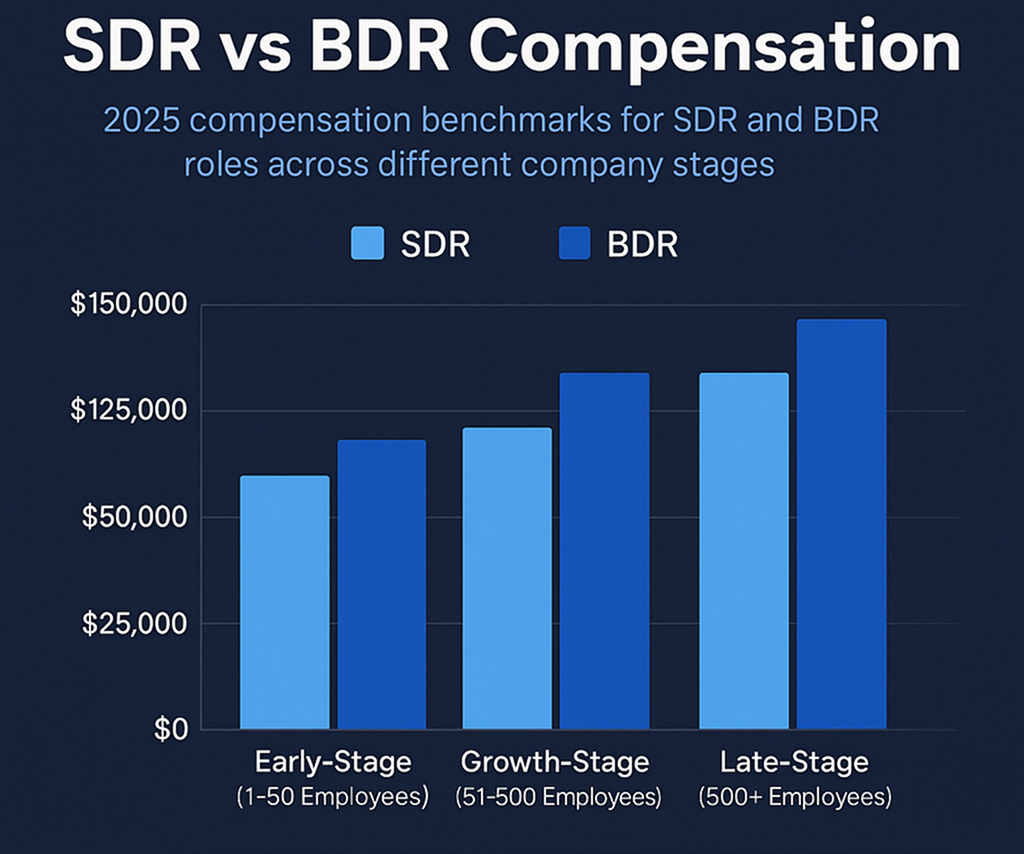
SDR vs BDR salaries
SDR vs BDR: Which Role Does Your Company Need?
Hire SDRs First If:
✓ You generate consistent inbound leads (50+ per month)
✓ Your marketing runs active campaigns driving form fills
✓ Your AEs spend too much time qualifying unfit prospects
✓ You have product-led growth with free trials
✓ Your average sales cycle is 30-90 days
Hire BDRs First If:
✓ Your inbound lead volume is low (<50 per month)
✓ You're entering new markets or verticals
✓ Your ACV justifies targeted outreach ($50K+ deals)
✓ You sell to narrow, well-defined ICP
✓ Your sales cycle is 90+ days with enterprise buyers
Hire Both When:
✓ You're scaling past $5M ARR
✓ You want diversified pipeline sources
✓ You have capacity to manage specialized teams
✓ Your market has strong inbound potential and lucrative outbound targets
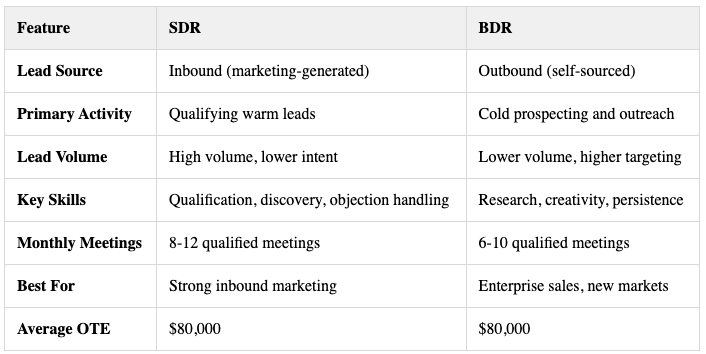
The Essential Tech Stack for SDR and BDR Success
Modern sales development representatives need accurate, up-to-date contact data.
Best teams use waterfall enrichment - cascading through multiple data providers to maximize email and phone discovery rates.
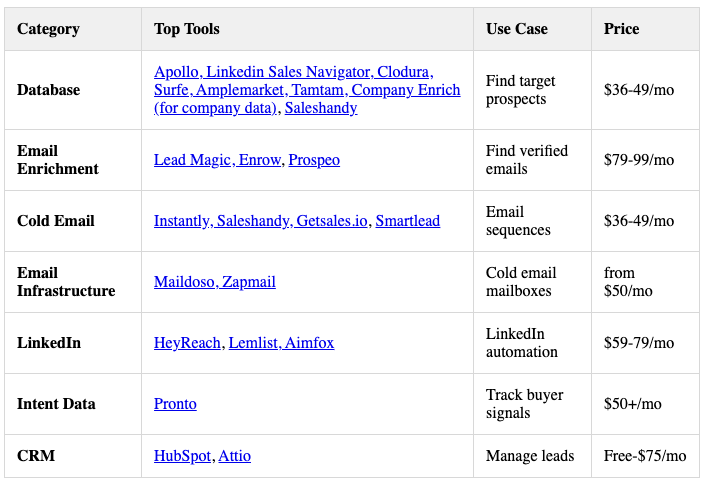
Top Tools for 2025:
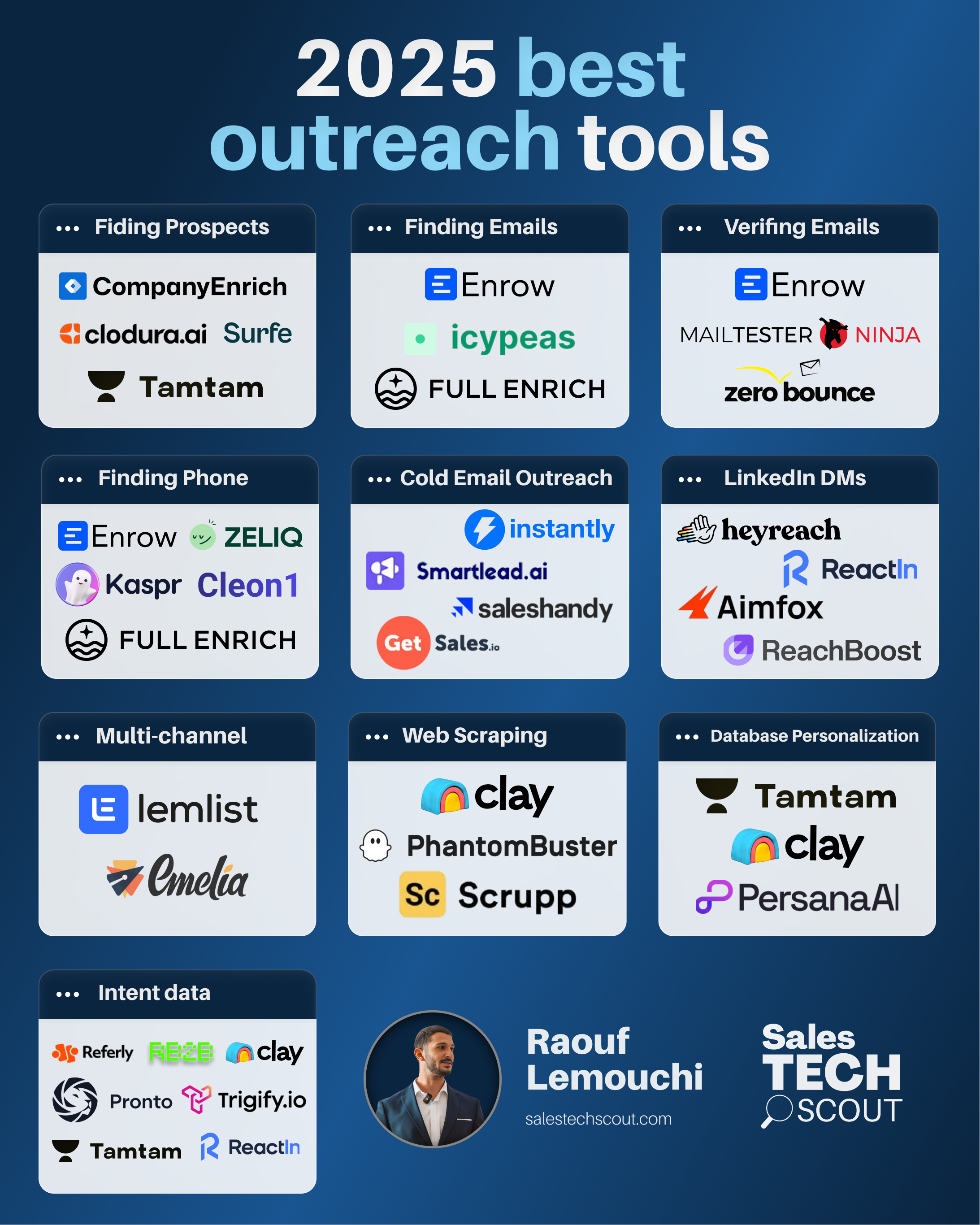
Common Mistakes That Kill SDR and BDR Performance
Mistake #1: Hiring Hybrid "SDR/BDR" Roles Too Early
Many startups hire one person for both inbound and outbound. This rarely works.
The Problem: Inbound and outbound require different skill sets, processes, and mindsets. Splitting focus results in mediocre performance.
The Solution: Start with the role matching your current lead generation model. Add the second role when you reach 2-3 AEs.
Mistake #2: Insufficient Lead Volume
Hiring an SDR with only 20 inbound leads monthly means your SDR spends most time waiting.
The Solution: Ensure sufficient lead volume before hiring. SDRs need 50+ MQLs per month minimum. Without that volume, hire BDRs instead.
Mistake #3: Ignoring Deliverability
The #1 reason cold email campaigns fail isn't bad copy - it's deliverability. If emails land in spam, perfect messaging won't generate replies.
The Solution: Use dedicated cold email infrastructure like Maildoso or Zapmail, implement proper warm-up, rotate sender domains, and monitor deliverability daily.
Mistake #4: No Career Progression Path
SDR and BDR roles have high turnover (average tenure is 14-18 months). Without clear advancement, your best reps leave.
The Solution: Create explicit promotion criteria (e.g., "hit 120% of quota for 2 consecutive quarters = promotion to AE"). Offer mentorship and skill development.
The Future of Sales Development Representative and Business Development Representative Roles
AI-Powered Personalization
Tools like Octave, Clay, and Artisan automate research and personalization that previously took hours.
What this means: SDRs and BDRs spend less time on research and more on high-value conversations. AI makes personalization at scale table stakes.
Product-Led Sales Signals
With Common Room and Unify, SDRs track product usage signals, website visitors, and intent data to prioritize warmest leads.
What this means: SDRs increasingly blend inbound qualification with signal-based outreach, blurring lines between traditional SDR and BDR activities.
AI SDR Agents
Platforms like Artisan, 11x, and Jason AI build AI agents handling initial outreach and qualification autonomously.
What this means: Entry-level SDR/BDR tasks may be automated. Human reps focus on complex discovery, relationship building, and closing.
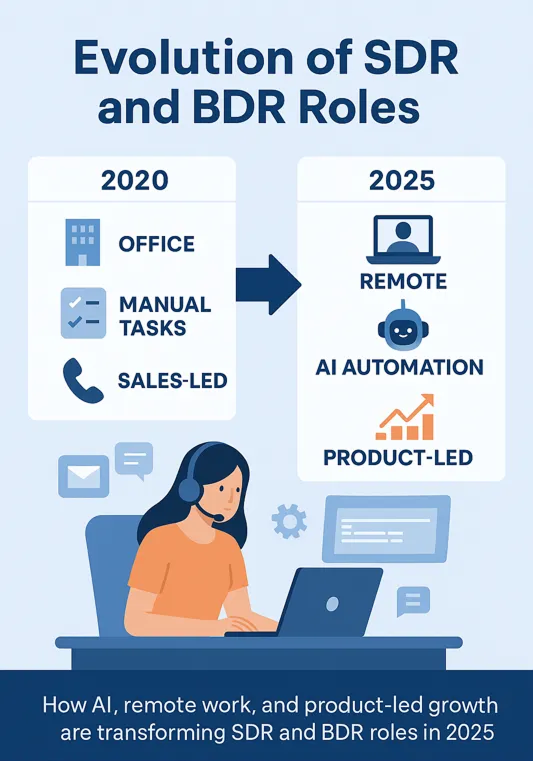
Frequently Asked Questions
What is the difference between SDR and BDR?
SDRs (Sales Development Representatives) qualify inbound leads from marketing. BDRs (Business Development Representatives) generate new pipeline through cold outbound prospecting. The key sdr bdr difference: SDRs work warm inbound leads, BDRs work cold outbound leads.
Can one person do both SDR and BDR work?
Technically yes, but not recommended. The skills, processes, and mindsets for inbound qualification versus outbound prospecting are fundamentally different. Companies combining these roles typically see lower performance on both fronts.
What is the SDR BDR salary comparison in 2025?
Both roles average $80,000 OTE with a 68:32 base-to-variable split. That's approximately $54,400 base salary plus $25,600 variable compensation. Geographic location, company size, and industry affect actual compensation.
How long should someone stay in an SDR or BDR role?
Median tenure for sales development representative roles is 14-18 months. High-performing organizations promote SDRs/BDRs to Account Executive after 12-24 months. If reps stay longer than 2 years without progression, expect high turnover.
What are the best tools for SDRs and BDRs?
Best cold email tools for BDRs: Instantly, Smartlead, Saleshandy.
Best Database tools: Apollo, Saleshandy, Surfe, Amplemarket, Clodura, Tamtam
Best Data enrichment tools: LeadMagic, Enrow, Prospeo
Best Linkedin DM tools: HeyReach, Aimfox, Getsales, Emelia
Best CRM for SDR teams: HubSpot, Attio, Pipedrive.
Should SDRs and BDRs get commission on closed deals?
Best practice: pay SDRs/BDRs based on qualified meetings or opportunities created, not closed revenue. The close happens 30-90 days after handoff, and AEs control the outcome. Some teams offer small kickers (1-2% of deal value) for alignment.
TL;DR: SDR vs BDR - The Bottom Line
SDRs qualify inbound leads marketing has warmed up. They bridge marketing and sales, converting interested prospects into sales-ready opportunities. Hire SDRs when you have consistent inbound volume (50+ leads/month).
BDRs generate new pipeline through cold outreach to prospects who've never heard of you. They create opportunities from scratch via email, LinkedIn, and phone. Hire BDRs when inbound volume is low or you need to penetrate specific target accounts.
Both roles are essential for building diversified, predictable pipeline. Best sales organizations deploy both SDRs and BDRs, using specialized tools like Saleshandy, Instantly, FullEnrich, and Pronto to maximize efficiency.
Key to success: Clearly define each role, invest in the right tech stack, set realistic quotas, and create advancement paths keeping top performers engaged.
Your pipeline depends on it.
Subscribe to Our Newsletter
To Never Miss a Thing

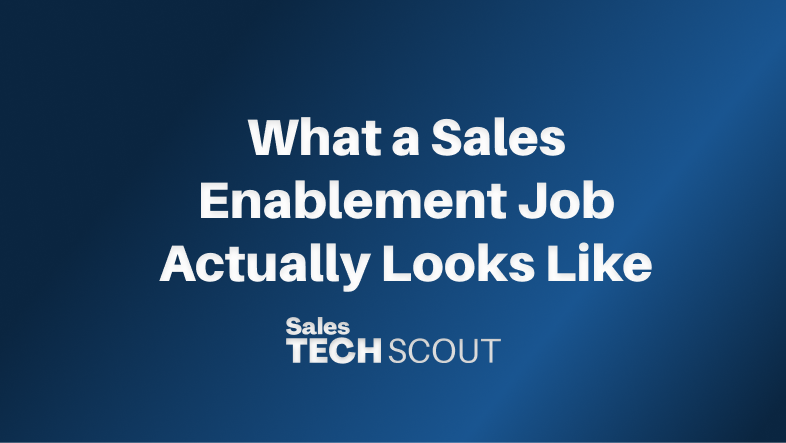




.avif)


